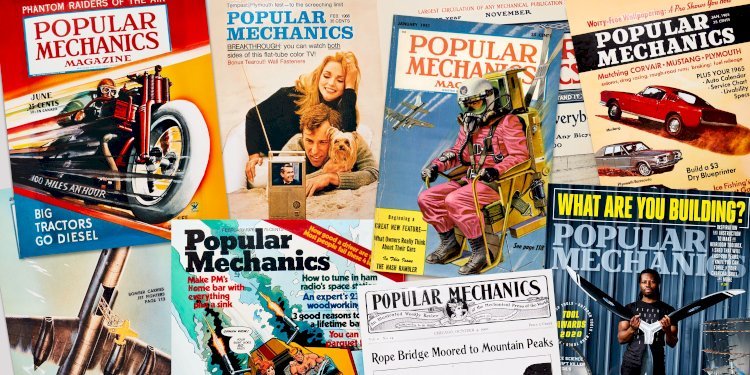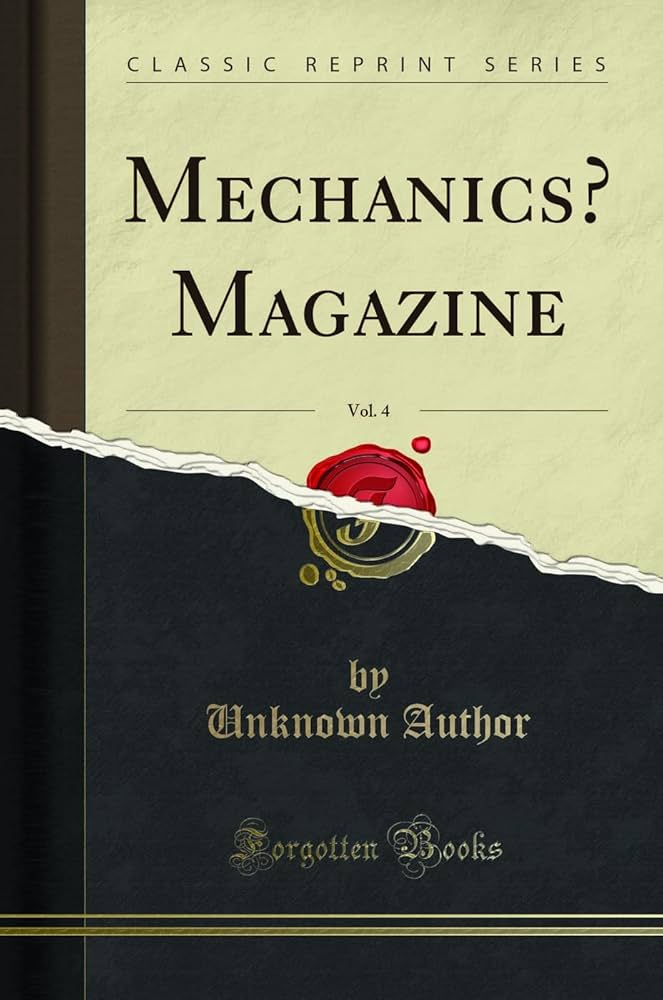Popular Mechanics Magazine Subscription: Is It Still Worth It in 2025?
Is a Popular Mechanics magazine subscription still worth it in 2025? Get updated prices, pros & cons, U.S. & India plans, digital perks, and more.

Since its first issue in 1902, Popular Mechanics has captured the imagination of readers fascinated by how things work. Over more than 120 years, the magazine has explained everything from the rise of the automobile to the dawn of space exploration. Today, in 2025, it continues to balance DIY know-how, scientific discovery, and cutting-edge technology in a way that appeals to a broad audience.
But in an era where YouTube tutorials, free blogs, and podcasts can teach you almost anything, is it still worth paying for a Popular Mechanics subscription? Let’s dive into the magazine’s history, current offerings, pricing, readership, and cultural relevance to see if it remains a smart investment.
A Brief History of Popular Mechanics

Image source: amazon.com
The magazine was founded by Henry Haven Windsor in Chicago, with a mission to make technical and scientific knowledge accessible to everyday people. Over the decades, Popular Mechanics documented some of the world’s greatest innovations: aviation breakthroughs, World War II engineering, the space race, and the rise of the computer age. Its classic covers, full of bold illustrations and futuristic predictions, became cultural icons.
By the 20th century’s mid-point, it was selling millions of copies each month. While circulation has declined in the digital era, its brand recognition and credibility remain strong. Today, published by Hearst Communications, it releases six print issues per year alongside a robust digital platform.
Who Reads Popular Mechanics in 2025?

Image source: amazon.com
The audience for Popular Mechanics has shifted over the years but remains diverse.
-
Age group: Most readers are between 25–54 years old, often professionals, hobbyists, or students.
-
Gender: Traditionally male-skewed, but female readership is steadily rising, especially in DIY and science categories.
-
Education: Strong among college-educated readers, engineers, and STEM enthusiasts.
-
Global reach: While most subscribers are in the U.S., the digital edition has expanded readership to India, Europe, and beyond.
This mix shows that Popular Mechanics appeals not just to tinkerers in their garages but also to curious learners worldwide.
Editorial Focus in 2025

Image source: ecosustainexpo.in
The magazine has always adapted to the times, and in 2025 its content reflects today’s most pressing themes.
-
Artificial Intelligence: From how AI tools are changing daily life to ethical debates.
-
Renewable Energy & Sustainability: Coverage of electric vehicles, solar power, and future energy tech.
-
Space Exploration: NASA missions, private companies like SpaceX, and prospects for Mars.
-
Military & Defense: Features on drones, defense innovations, and global security.
-
DIY & Maker Culture: Step-by-step guides for home projects, tool reviews, and outdoor survival tips.
This ensures it remains modern, relevant, and practical, while still honoring its tradition of explaining how things work.
Subscription Options & Pricing in the U.S. (2025)
.webp?length=550&name=03%20-%20Lawyerlink%20-%20Website%20-%20Subscribe%20(1).webp)
Image source: hubspotusercontent
In the U.S., subscriptions remain affordable, especially compared to the cover price of single issues.
| Plan | What You Get | Price |
| Print Only | 6 bi-monthly issues mailed to your home | ~ $18 |
| Digital Only | Website + app access, archives, 6 digital issues | ~ $20–25 |
| All Access Membership | Print + Digital + Unlimited website articles (50+ per week) + Members-only newsletter + 6 exclusive digital-only issues | ~ $40 |
| Single Issue | Newsstand copy | $5.99 each |
Best Value: The All Access Membership gives you everything—print, digital, exclusive content—for about the price of a few lattes per month.
Subscription Costs in India (2025)
Image source: gstatic.com
International readers face a very different pricing reality.
-
MYSUBS India: ₹10,968/year for 6 imported issues (≈ ₹1,828 per issue).
-
Exporters India (Mumbai): ₹1,250 per single imported issue (~₹7,500 for six).
-
Digital Subscription: ₹1,650–₹2,000/year through global vendors, with no delivery delays.
Tip for Indian readers: Stick to digital plans. They are cheaper, instant, and avoid customs or courier delays that plague imported print editions.
Key Benefits of Subscribing
Image source: gstatic.com
Even in 2025, readers remain loyal to Popular Mechanics because of its unique strengths:
-
Heritage & Trust: More than a century of publishing credibility.
-
Balanced Coverage: Equal focus on practical DIY and big science/tech topics.
-
Hands-On Value: Clear project instructions and reliable tool reviews.
-
High Visual Standards: Photos, illustrations, and infographics enrich every issue.
-
Digital Extras: Exclusive web stories, special issues, and newsletters add significant value.
Drawbacks to Consider

Image source: licdn.com
No subscription is perfect, and there are reasons some may hesitate:
-
The print edition now appears only six times a year, which feels infrequent.
-
Free online content can cover similar DIY projects at no cost.
-
It is broadly written, so experts seeking technical detail may find it too light.
-
Some readers report subscription management issues, such as auto-renewal problems or late deliveries.
Collectors’ Angle: Vintage Value

Image source: datocms-assets.com
Older issues of Popular Mechanics are now collectible items. Issues covering landmark events like the moon landing or early aviation regularly sell for $20–100 each, and rare copies can fetch even higher prices. This adds a unique historical appeal to the magazine beyond its present-day content.
Popular Mechanics vs Competitors
Image source: gstatic.com
Here’s how it compares with similar publications in 2025:
| Magazine | Best For | Weakness Compared to Popular Mechanics |
| Popular Science | Futuristic science and speculative tech | Less focus on hands-on DIY |
| Scientific American | Academic research and scientific depth | Too technical for casual readers, pricier |
| Wired | Tech-business trends and culture | Doesn’t cover practical how-to guides |
| Make Magazine | Makers and gadget builders | Niche focus, lacks broad science/tech coverage |
Popular Mechanics succeeds by sitting in the middle ground: more approachable than academic journals but more substantial than casual blogs.
Read Also: Top Music Magazines in Ireland You Should Read (2025 Guide)
Is It Worth It in 2025?

Image source: anindigoday.com
The short answer: Yes—if you’re the right reader.
For U.S. subscribers, the All Access plan at $40/year is excellent value, offering print, digital, archives, and bonus content. For international readers, especially in India, the high cost of imported print editions makes digital subscriptions the smart choice.
While you can find endless free science and DIY resources online, Popular Mechanics offers something the internet often lacks: curation, credibility, and visual quality. Every article is carefully edited, fact-checked, and presented in a way that educates as well as entertains. That’s why it remains one of the most respected names in science and DIY publishing.
Conclusion
In 2025, Popular Mechanics continues to thrive as a trusted source of knowledge for people who want to learn, build, and explore. Despite fewer print issues and competition from free content, it remains highly relevant thanks to its digital transformation, strong editorial focus, and unmatched history.
For readers in the U.S., the subscription is affordable and rewarding. For those in India and elsewhere, digital plans provide a practical alternative. Whether you’re a DIY enthusiast, a science lover, or simply curious about how the world works, Popular Mechanics is still worth subscribing to in 2025.
FAQs
Is Popular Mechanics still being published?
Yes, six issues per year in print, plus digital editions and online exclusives.
How much does a subscription cost?
In the U.S., subscriptions range from $18 to $40 per year. In India, imported print can cost around ₹11,000 annually, while digital is only about ₹1,650–₹2,000.
Is it suitable for students?
Yes, it’s excellent for sparking curiosity in science and engineering through easy-to-understand explanations.
Can I read it online for free?
Some articles are free, but full archives and premium features require a subscription.

















